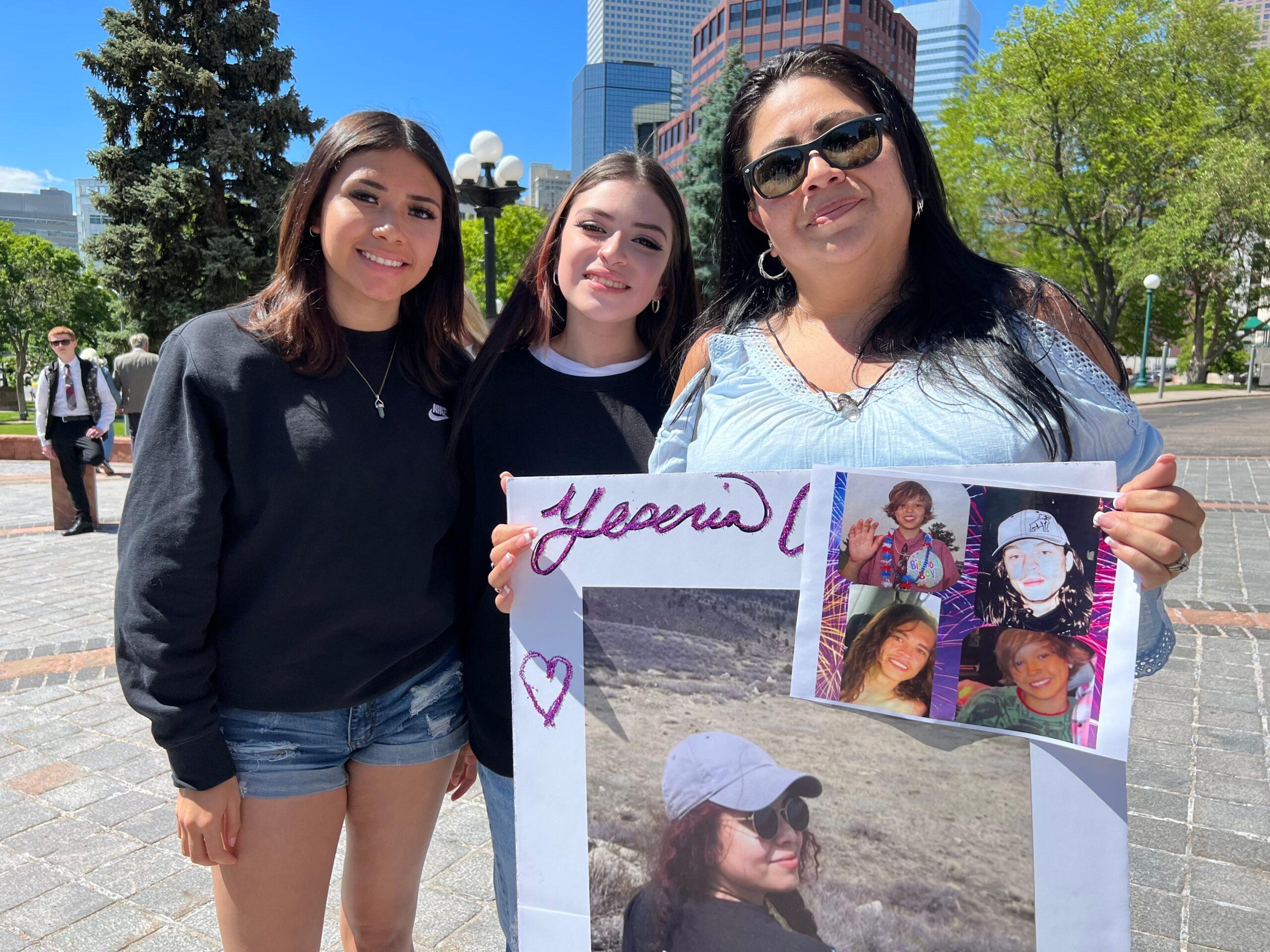
Illegal drug transactions are easily obscured and conducted through internet platforms — and it’s a problem that’s aided the rise of fentanyl-related deaths over the last three decades, the Colorado Attorney General’s Office shared in a report released Wednesday.
The 182-page document, which the AG’s office said is the first of its kind, is a result of a fentanyl law that was passed last year. The bill mandated the attorney general to study how the internet is used — including retail, payment and social media platforms — to illegally distribute fentanyl and other counterfeit prescription drugs.
Fentanyl is a synthetic opioid first introduced in the 1960s for surgical and cancer patients. It is roughly 50 times more potent than heroin and 100 times more potent than morphine.
The DEA Rocky Mountain Division — which covers Colorado, Montana, Utah and Wyoming — announced a record number of fentanyl seizures in 2022, having confiscated nearly 2 million fentanyl pills and more than 150 pounds of fentanyl powder, the report stated.
This is only a small portion of the total amount of fentanyl trafficked, officials said. In 2021, nearly 2,000 Coloradans died of a drug overdose — roughly half of whom died of fentanyl, according to the report.
Youth in Colorado appear to be especially susceptible to fentanyl poisoning, as unsuspecting teens are vulnerable to taking what turns out to be counterfeit prescription pills containing lethal doses of fentanyl, Colorado Attorney General Phil Weiser said in the report.
“Where once a teen might have had to seek out a street dealer, hassle friends, or learn to navigate the dark web to access illicit drugs, young people can now locate drug dealers using their smartphones — with the relative ease of ordering food delivery or calling a ride-share service,” Weiser said.
But it’s impossible to pin down how often illicit drugs are exchanged online, according to researchers from the Colorado Department of Labor, due to limited data and because social media platforms don’t provide transparent access to the relevant data.
The availability of fentanyl and other illicit substances online is staggering, the report found, and drug dealers conveniently distribute it by using online profiles, comment sections and other means on social platforms.
More transparency is needed from online groups, the AG’s office stated in its list of solutions in the report. It was also suggested that a federal agency oversee social media platforms, among other things.
“As innovative online services and platforms weave their way into nearly every aspect of our lives, they also threaten to fuel a dangerous killer — the increasing ease of access to deadly substances, including fentanyl,” Weiser said in a statement.
“... That means we will use all tools at our disposal to address this crisis, including pressing the federal government to address the flow of such deadly drugs into our community and calling on social media companies to do more to restrict the distribution of this deadly substance through their platforms.”
Key findings: Social sites are convenient for drug dealers
The report found that drug dealers and buyers turn to social media platforms as a primary means for drug transactions. Both prefer the convenience and discretion afforded by social media, and they rely on the companies’ inability or unwillingness to prevent drug activity on their platforms.
Drug dealers like to target younger or more vulnerable social media users as new users, the report found. They can also have aggressive marketing tactics.
Commander Nick Goldberger of the Boulder County Sheriff’s Office said some social media features make it hard for police to do their jobs.
“When platforms intentionally tout features like near-immediate deletion of communication exchanges and short retention periods of data held on the platforms’ servers, it puts law enforcement at an extreme disadvantage when investigating those using the platforms for illegal activities like selling drugs,” Goldberger said in a statement.
According to the report, drug dealers also rely on certain internet platform designs and features to facilitate drug sales. Researchers said most social media companies they reviewed for the report, including Meta, Snapchat and TikTok, had already adopted policies banning the use of their platforms to promote, advertise, buy or sell illegal drugs. Some had also made efforts to work with law enforcement in addressing the issue.
But still, most social media companies’ responses to drug activity on their platforms were not very effective, the report found.
Drug dealers use coded methods of marketing and selling drugs online, including using special slang terms, emojis and other methods of redirecting buyers to drug content through hyperlinks and QR codes. The report also found dealers might use spam or bots to generate comments on social media posts using illicit substance-related hashtags or keywords. Drugs dealers might also use selling cues, customer reviews and other guarantees of seller legitimacy to gain trustworthiness. These selling cues are used to differentiate a drug seller and assure potential customers that the seller is not a scammer or police, the report stated.
Gaining access to fentanyl through social media is nearly as convenient as using one’s phone to order a pizza or call an Uber, the report stated.
One example provided in the report highlighted how one community member was able to demonstrate to the report’s authors just how easy it was to find drugs on the Kik messaging app. Using Kik’s “public groups” feature to search for terms like “Denver” and “Boulder” returned dozens of search results for groups dedicated to drug buying and selling.
Connecting with a local dealer took minutes, the report stated.
“This is a complex public health challenge, but solutions are available both from a technology and policy standpoint, provided platforms can commit to transparency, accountability, and make strong and meaningful commitments to keep their online communities safe from harm,” said Tim Mackey, CEO and co-founder of S-3 Research, LLC.
Researchers found drug sellers conduct illegal drug transactions online by creating their own content and commenting on others’ drug-related content. Sellers may also share non-drug-related content, allowing them to increase engagement with their accounts and connect with new users, the report found.
The state labor department gathered information for the report from government reports, academic publications, public health data and news articles. Also, as directed by last year’s statute, the labor department also consulted with the United States Attorney for the District of Colorado, whose staff provided insight into drug dealers’ online activities.
The labor department said it also spoke with representatives from Meta, Snapchat and TikTok; nonprofit advocacy organizations, federal, state and local law enforcement; federal and state prosecutors; public health experts; substance abuse recovery groups and affected family and friends of overdose victims.
Suggestions for moving forward
Weiser said local governmental entities are working with the labor department to invest more than $740 million in opioid settlement funds from pharmaceutical companies that caused the opioid crisis in Colorado. Researchers in the report provided the following recommendations for combating the illegal sale of drugs online:
- A federal agency to oversee social media platforms.
- Federal legislation requiring greater access to social media platforms’ data transparency should be enacted.
- Social media platforms should adopt a uniform set of best practices to prevent and respond to illicit drug activity.
- Colorado should consider legislation requiring social media platforms to clearly disclose their policies on drug activity and cooperation with law enforcement, and to publish regular transparency reports providing data on their enforcement activities.
- Social media companies should enter a memorandum of understanding with the department, memorializing their commitment to implementing identified best practices for addressing illicit substances activity on their platforms, subject to penalties for failure to follow the terms of the memorandum.
- More resources should be provided to support existing law enforcement efforts to combat drug distribution online.
- Increased resources for substance abuse treatment and harm reduction specifically tailored for teens and young adults.
- There should be increased focus in expanding internet and social media literacy for parents and caregivers.








